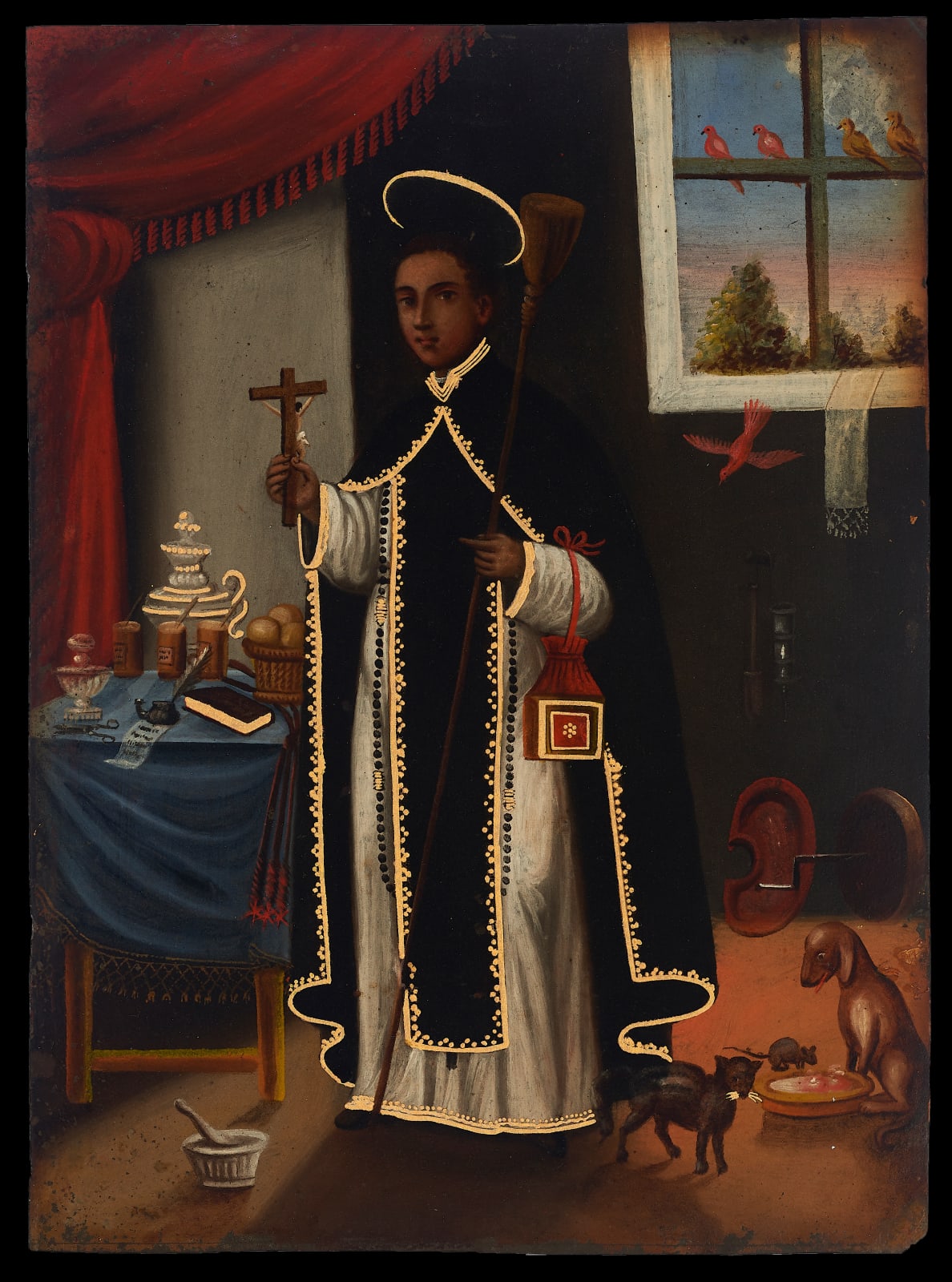SAINT MARTIN DE PORRES
Provenance
Private Colecttion
Martín de Porres, the first saint of African descent in Latin America, was born in the late 16th century, the illegitimate son of a Spanish nobleman and a freed slave woman. For most of his life he was linked to the Dominican monastery of Nuestra Señora del Rosario which, due to his status as a bastard and a mulatto (the term by which the study of castas in the Modern Era defined children with one white parent and one black one), he was initially not allowed to enter as a monk. He was denied the chance to say mass and was relegated to tasks relating to the monastery infirmary. It was through his successes as a healer that his fame grew in the area.
The miracles attributed to him are largely related to the healing of the sick. Also, and in accordance with another characteristic of certain Christian saints (such as St. Francis or St. Anthony), he is said to have established extremely close ties with all sorts of animals, who he also tended to in his apothecary.
In this painting on brass the saint appears dressed in Dominican habit (with his cloak and scapular edged with gold), along with a good number of his iconographic attributes. He holds the most important of these in his left hand: a broom, referring to his humble origins, and which gave rise to his soubriquet, the Saint of the Broom. In his right hand he is holding a crucifix, the symbol of his devotion. The room in which he is portrayed is presumably a depiction of his apothecary. On the left of the composition, under a red drape with tassels that has been gathered back, we find a table with a blue tablecloth on which various objects are standing. A glass jug with gilt edges, three cylindrical vessels, a basket and scissors, alluding to his skills in preparing medicinal ointments. His attributes also include a whip with three tails, the ends of which are bloody, a reference to the penance Martín subjected himself to as part of his mystic and religious experience. In front of the table, at the saint's feet, there is a stone mortar, essential for preparing the medicines of the day and, once again, a reference to the healing gifts of the Saint of the Broom. On the right of the composition a window opens up, with four birds perched on it (a fifth is seen flying into the room). A white embroidered cloth is hanging from the sill, complementing the other objects under the window, including a bowl and a brush (reminding us that in this period the same person would often fulfil the functions of barber, surgeon and pharmacist). Finally, in the lower right-hand corner, we find an explicit reference to one of the saint's miracles, where he tamed a mouse, a cat and a dog, managing to get them to eat peacefully from the same bowl. The recognition of his community, and his subsequent legitimization by his father, improved his situation in Lima in the early 17th century, but he would continue to bear the stigma of belonging to a racethat viceregal society branded as being violent and undesirable (as demonstrated in "casta" paintings). However, the fervent religious character of society in the Spanish colonies allowed for the emergence and veneration of certain figures, such as Martín de Porres, who transcended "race" and attained sainthood. His story could serve moralizing ends, with colonial authorities using Porres as an example of a model of conduct to be followed by the Afro-Latin population, where his passivity and devotion were put forward as a stereotype with which they could identify. It is known that from 1501 the Spanish Crown only allowed (officially, at least) blacks to enter the colonies if they were Christians, so an element of cohesion for said community could be of use. All the more so if we consider the abundance of African slaves travelling the Spanish trade routes, with Seville acting as the main port for the slave trade in the west of Europe from the 15th century on. Along with St. Benedict of Palermo, Martín de Porres stands as the major exception to the generalized absence of black subjects depicted in the visual arts during the Baroque period.
